I’m standing in the bathroom on the upper floor – you really don’t have to know what I’m doing –looking wistfully through the chartreuse-coloured cascade that is the weeping willow at the bottom of our garden and across the canal to Victoria Park. It is `just spring when the world is puddle-wonderful’ as American poet E.E. Cummings once put it, and we can no longer enter it. Like pints after work and an evening at the theatre, our beloved park is just a memory. It’s encaged by tall iron gates.
Pining away for a full-blown spring, I’m thinking a lot about the weather today. There’s a belief that Londoners talk about nothing other than what it’s doing outdoors. In fact, property prices might be a more common topic these days, but the weather remains a tried and true subject here.
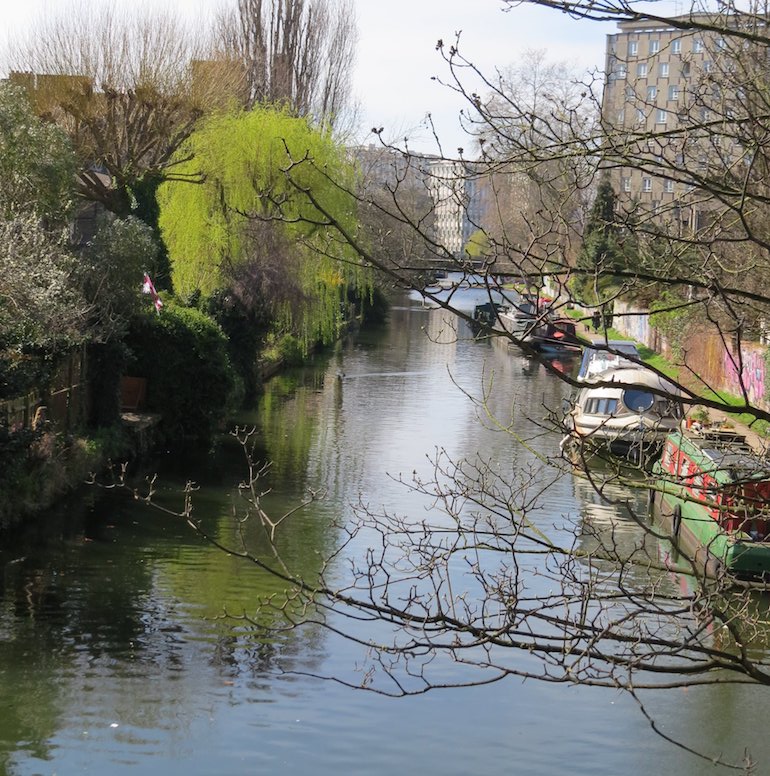 Hertford Union Canal & towpath, Bow, East London. Photo Credit: © Steve Fallon.
Hertford Union Canal & towpath, Bow, East London. Photo Credit: © Steve Fallon.
Londoners might tell you otherwise, but the British capital really does have a mild climate. It is never very hot in summer (average temperature in August: 19°C/66°F) nor too cold in winter (average temperature in January: 5°C/41°F). So, when the mercury drops a few degrees in the cooler months or goes up an equal amount in the warmer ones, people go gaga.
Mind you, who can blame them in winter when mid-week afternoons seem to stretch on from early November to the start of March, with the damp perma-darkness weighing down even more heavily as the months wear on? But then April `with his shoures’, as Chaucer told us, brings us spring, turning the city’s glorious open spaces into an impressionist tapestry of indigo, green and gold. London has one of the most glorious springs anywhere in the world; it looks and smells and feels like a spring of days gone by – before the season turned into a 15-minute interval between winter and summer elsewhere. And that is when our best girlfriend Vicky puts on her finest performance!
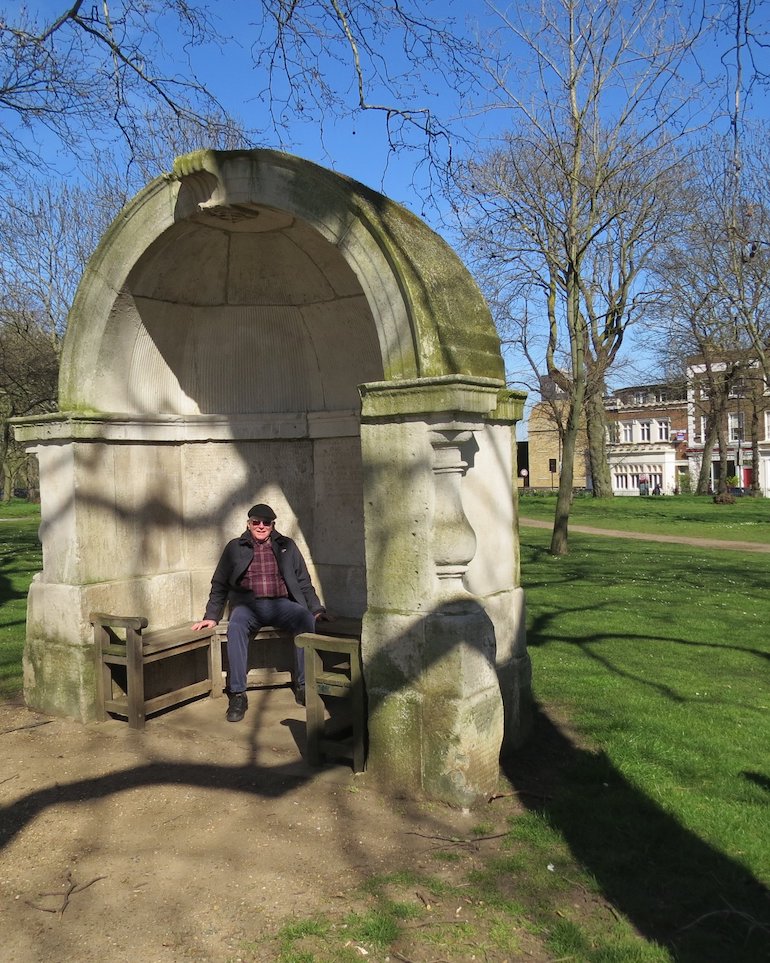 18th-century pedestrian alcoves from old London Bridge, Victoria Park, Bow, East London. Photo Credit: © Steve Fallon.
18th-century pedestrian alcoves from old London Bridge, Victoria Park, Bow, East London. Photo Credit: © Steve Fallon.
Victoria Park was the East End’s first public park when it opened in 1845 and came about after a local MP presented Queen Victoria with a petition of 30,000 signatures. The Crown Estate purchased 88 hectares (218 acres), which were laid out by London planner and architect Sir James Pennethorne over four years. Later in the century, the park became an essential amenity for the working classes of the East End; for many poor local children, this would have been the only large stretch of greenery they ever encountered. And Victoria Park’s reputation as the ‘People’s Park’ grew as it became a centre for political meetings and rallies – the Speaker’s Corner of east London.
The park is divided by Grove Road. The much larger east side has football fields, a cricket pitch, a model-boat lake and two treasures. The first is a monumental drinking fountain to provide the poor with clean drinking water financed by the social reformer and philanthropist Angela Burdett-Coutts in 1862. The second is a pair of pedestrian alcoves taken from the old London Bridge demolished in 1831. In the more manicured west side there’s a boating lake with a fountain and flocks of exotic waterfowl, flower beds and a delightful Chinese pagoda on the lake’s small island. It’s a copy of one brought here in 1842 from the Chinese Exhibition in Hyde Park. You can reach it via the colourful Pennethorne Bridge.
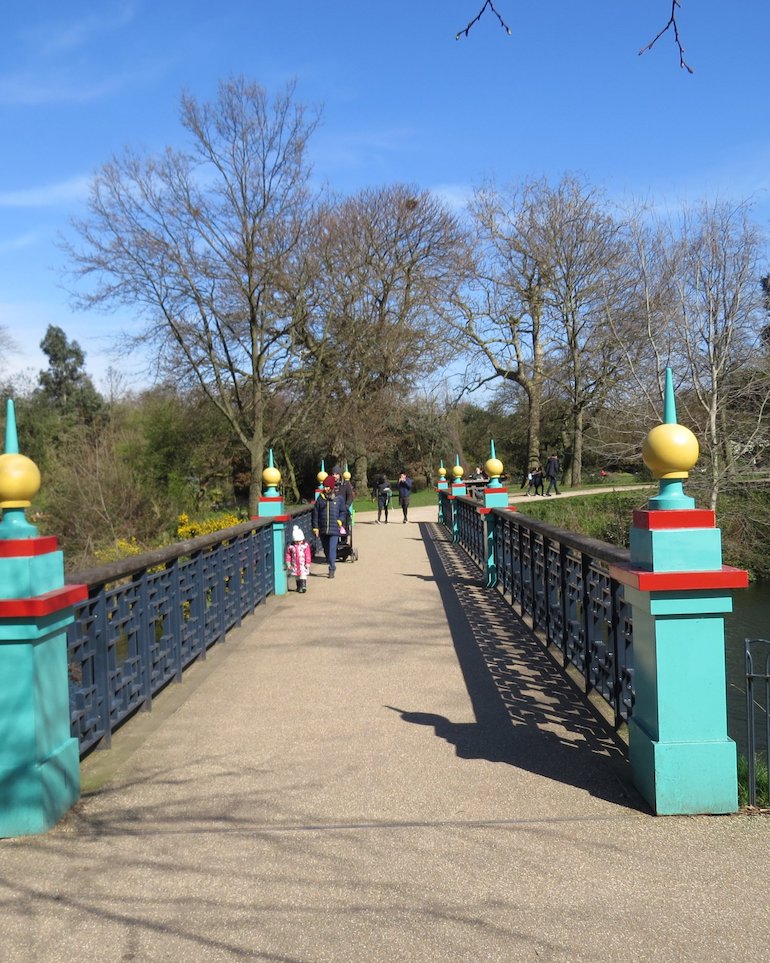 Pennethorne Bridge, Victoria Park, Bow, East London. Photo Credit: © Steve Fallon.
Pennethorne Bridge, Victoria Park, Bow, East London. Photo Credit: © Steve Fallon.
Victoria Park also counts more than 4,500 exotic trees – a Victorian passion. And when I discovered it was mine too while training as a London Blue Badge Tourist Guide, it became my study hall when we were learning to identify them. Gingko, false acacia, honey locust, Turkish hazel… I’ve never looked back.
High up the trunk of a gnarled and knobby fig tree on the park’s east side is a clay mask of a young woman. It’s thought to be the likeness of Margaret Muller, a 27-year-old American woman studying at the Slade School of Fine Art who was brutally murdered in a frenzied knife attack as she was doing her morning run on 3 February 2003. She was found slumped on a path between a rose garden and a playground after fellow joggers heard her screams. At the time, police said two men were seen fleeing from the scene. I may have seen one of them.
I had been walking our dog, the late and much-missed Whitey, through the park as I did every morning at around 7 am. Just as I was about to exit at Terrace Gate, I saw a man running toward me. Not in a jogging outfit and trainers but in street clothes. I looked directly at him and he gave me a somewhat embarrassed look as if to say `Don’t I look silly running in these shoes?’ I assumed he was going to catch the 277 bus, but he went the opposite way of the stop.
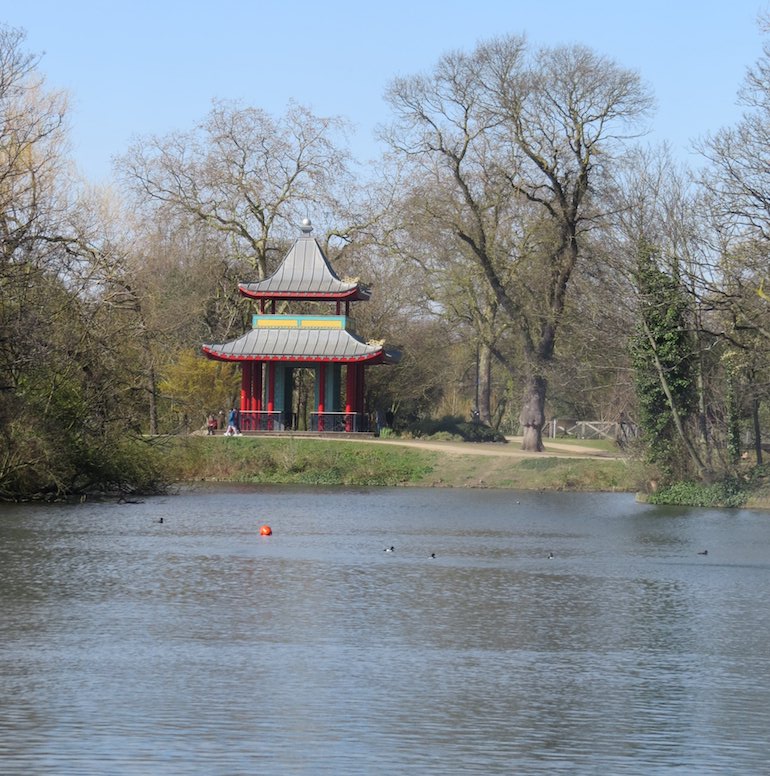 Chinese pagoda, Victoria Park, Bow, East London. Photo Credit: © Steve Fallon.
Chinese pagoda, Victoria Park, Bow, East London. Photo Credit: © Steve Fallon.
I didn’t think much about it that day but when police notices went up pleading for witnesses, I finally called to say I’d been in the area but `probably saw nothing’. The tone of the woman at the end of the line was frosty. `Let us decide what you do and do not know’, she said and told me to stay at home the next day. Two PCs arrived at 9 am and interviewed me for six hours, making me repeat myself over and over and over again. On a piece of paper in front of me was a list I’d prepared – in true `curtain-twitching’ style – describing the dozen or so people I passed and/or greeted each morning while walking Whitey. The PCs seemed less interested in them than they did of me. Indeed, I even sensed they knew of most of these strangers already. Margaret Muller’s slaying remains one of Britain’s most notorious unsolved murders.
The clay mask is being subsumed by the tree trunk these 17 years on. One day it will disappear or – more likely – be dislodged and fall to the ground, breaking into a million fragile little pieces. As the French like to put it, `Tout lasse, tout casse, tout passe’, which is just a fancy way of saying `This too will pass.’ And it will, friends and comrades, it will.
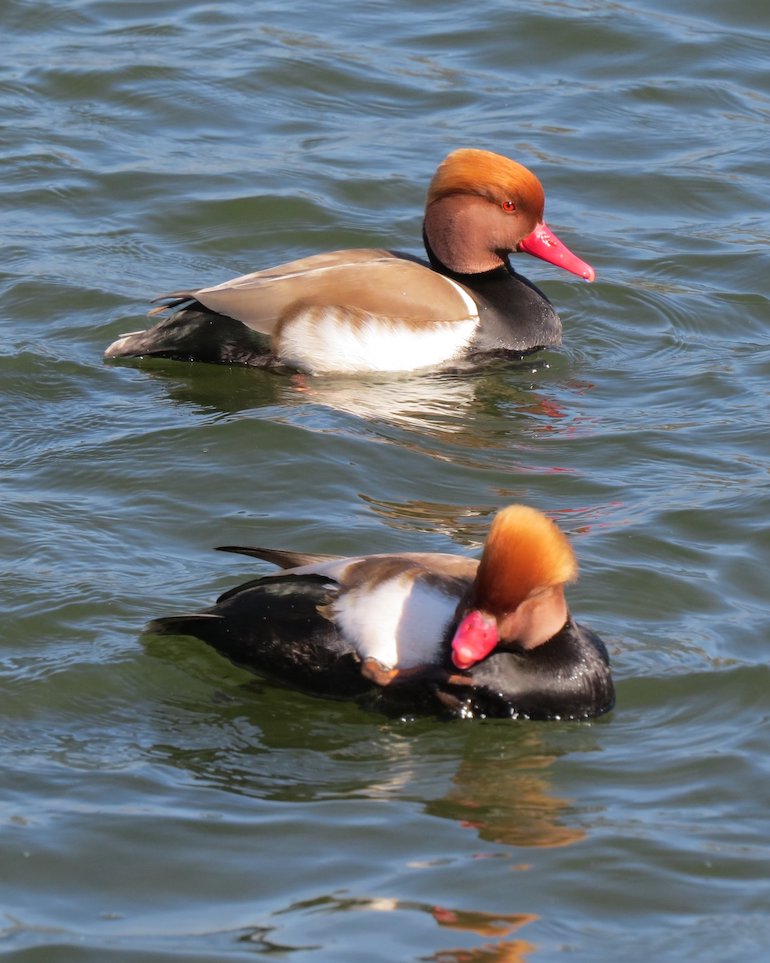 Pochard ducks on West Boating Lake, Victoria Park, Bow, East London. Photo Credit: © Steve Fallon.
Pochard ducks on West Boating Lake, Victoria Park, Bow, East London. Photo Credit: © Steve Fallon.
This is London from my window. Look out yours from time to time. You’ll be astonished at what you see.
*****
Read all 10 posts from Steve Fallon’s London lockdown series:
- The View From My Window: Our Three Local Heroes
- The View From My Window: The Good News from Victoria Park
- The View From My Window: The Source of Memories & Dreams
- The View From My Window: A Third Eye Opens
- The View from My Window: The Return of Poetry
- The View from My Window: A Flight of Fancy
- The View from My Window: Still in the Still of the Night
- The View From My Roof: Window Currently Not Available
- The View from My Window: My Old Man (Part 2)
- The View from My Front Door: Open Sesame



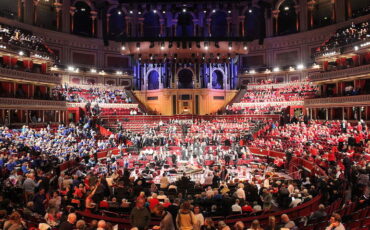
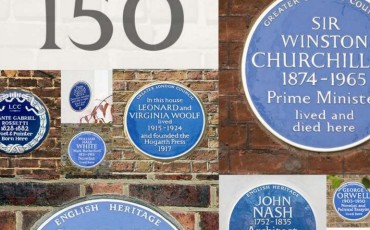


Leave a Reply